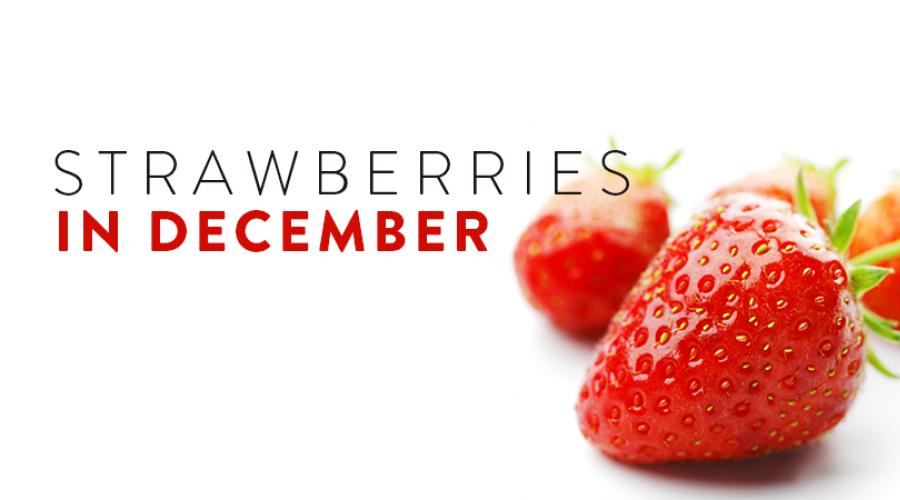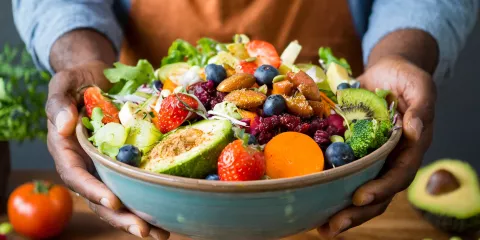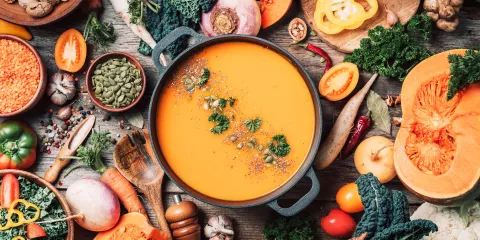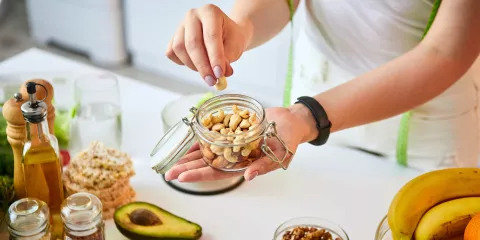
All over cold Europe in the Christmas season, fruitcakes are given as edible gifts. Why? Well, speculations vary on how the tradition arose, but here’s one to consider: European fruitcakes are made with candied fruits and are often baked with alcohol. The result: preservation. How well does alcohol preserve? In 2003, Jay Leno on The Tonight Show sampled a fruitcake that had been made with alcohol…in 1878!
Fruitcakes get a pretty bad rap - they’re often used in jokes to refer to a quaint and irrelevant delicacy of another. And that’s a pretty justified position, because now most of us can go to a grocery store in the middle of a freezing December and find fresh strawberries, oranges, and nearly every other fruit and vegetable. That was unheard of a hundred years ago, and it has had very important consequences for our health, our economy, and our environment.
If food is the story of humanity, food preservation was a major step in its evolution, and shipping was next. Recently, the ingenious species known as homo sapiens has gone back in time to re-think growing itself.
Let’s take a brief look at some of the issues—good, bad, and otherwise—that our pursuit of fresh food has created.
History: How to Get Nutrients After Growing Season Has Passed
Back when we were hunter-gatherers, we we were dependent on growing seasons for fruits and vegetables, and migration routes for much of our meat-based protein. For those located far from the equator, this could be a pretty desperate time. An evolutionary theory about our stomach’s ability to expand—and our cells’ ability to store fat—holds that we developed these abilities in order to gorge when plentiful fat was available.
Enter early preservatives like canning, pickling, and salt: finally we were able to keep some foods from spoiling. But do these methods preserve nutritional content? Actually, yes, these methods preserve quite a bit of foods’ nutritional content. The main nutrient lost to pickling and canning is vitamin C, but most other vitamins and minerals are maintained.
How Important is Vitamin C?
To put it bluntly: Vitamin C is absolutely essential. It protects us against scurvy, is instrumental in metabolism, and immune cells have it in high concentration. Vitamin C also acts as an antioxidant, which means it is helps prevent cell death.
If early preservation methods could not preserve Vitamin C, then, early preservation methods were not enough.
Refrigeration and Freezing
More important than pickling and canning to the explosion in human life spans and overall health was refrigeration, especially freezing. Freezing puts most organisms into a dormant state, which means they don’t break down or spoil. But do they lose their nutritional content?
The answer is no.1 This is another common misconception. Freezing actually preserves the vast majority of the nutritional content of most food, if it is frozen quickly and when the food is in a pristine state. There’s an amazing story of 250,000 year old wooly mammoth meat that was flown on ice from Alaska to New York for a dinner for the Explorers Club in New York in 1951. The story may be apocryphal, but the science behind the story is correct: if a wooly mammoth was actually frozen continuously, it could yield edible meat.
Shipping
The problem with the story of the frozen mammoth is this: the moment the temperature climbs above freezing is the moment when biological processes kick back in. This is why you are instructed not to re-freeze items like chicken. There’s nothing magical going on when you defrost and then re-freeze chicken (or strawberries, etc.) - it’s just that when you defrost it, you are inviting biological processes to resume doing their work, and when you re-freeze, you are essentially making dormant whatever process of degradation has occurred.
This is also why if you open a package of frozen anything and find ice crystals, you must suspect that at some point on that item’s journey, it unfroze. How long was it unfrozen? This is difficult to know, so you might as well play it on the safe side: don’t eat it.
New Approaches to Growing and Providing
80% of strawberries consumed in the U.S. come from California, and most of the rest come from Florida. Why? The answer is the temperate climate: strawberries grow best above freezing but without extreme heat. So California is able to grow strawberries in its northern part during the summer and in its southern part during the winter, successfully avoiding extreme temperatures. In 2014, California produced 2.3 billion pounds of strawberries - a staggering amount worth $2.6 billion. This amazing haul could then be shipped in the middle of December to Alpena, Michigan…or whatever region could afford the increased charge applied to defray the shipping costs.
In other parts of the world, even more ingenious and modern methods of strawberry production are afoot: Spain, Italy, France, and even the ultra-cold Germany have a high strawberry yield through “forced cultivation.” This method sees strawberries grown underground in polyethylene tunnels. Israel goes a step further by cultivating strawberries in “soilless” media: coconut coir and volcanic glass!2
Why is This Important?
Remember when people used to say winter is the time to get sick? Well, people still say it, but winter sickness in the developed world is most likely not as rampant as it once was, or at least it is not due to malnutrition. A big reason for that is that people are able to get their fruits and vegetables all year round, due to ingenious growing practices, quick shipping, and supply and demand economics.
Now, all of these practices have other costs. Shipping, for one, contributes both to harmful greenhouse gases and the rapid communication of infectious diseases. Call that a cloud over the silver lining.
In the meantime, though, don’t worry so much about not liking fruitcake - it is an antiquated relic, and fresher fare is available…at a price.
References
- Keyser, Hannah. The Time 250,000-Year-Old Mammoth Was Served for Dinner. Mental Floss. http://www.berkeleywellness.com/healthy-eating/food-safety/article/freezing-food
- University of Florida. Strawberry production around the world. http://www.hos.ufl.edu/protectedag/Strawberry.htm












